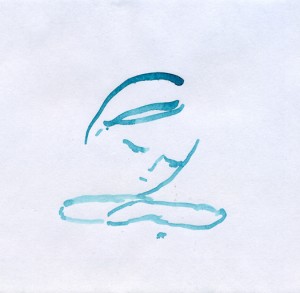The Pernicious Inner Critic
The inner critic is something we are all familiar with. That little voice in our head that sows seeds of doubt that begin to question our creativity.
I’ve been working on a series of watercolors that I recently started to have doubts about. My inner critic started saying things like, “These colors are too basic” or “The colors aren’t sophisticated enough.” It wasn’t enough to make me stop working, but those seeds of doubt were there.
However, after seeing the Hilma af Klint’s show at the Guggenheim, I had an “a-ha” moment – we were using a very similar palette! I realized that the little voice had gained traction in my head and it was time to turn away from it and embrace the decisions I was making in my work.
It’s so easy for that inner critic to creep into the studio. Sometimes it’s helpful – it pushes us to ask questions, but it can also slowly take over and drown out our positive sense of self.
Do you struggle with an inner critic? It’s something we all experience from time to time. I invite you to share your experience in the comments below and how you have managed to turned it around.
Leave a Comment
Some Thoughts on Success: Is That All There Is?
Today I’m bringing back a post from my archive that explores why we may feel dissatisfied when we reach goals or achieve success, and how to find validation in the present moment. Enjoy!
A dear artist friend of mine recently finished a major commission. (SO excited for her and proud of her!) However, she mentioned she’s feeling a little let down after all the hard work she put in to get it finished on a tight deadline. She’s left with that feeling: Is that it?
It reminded me of a story I heard about an artist who achieved the distinction and recognition of being included in the Whitney biennial in her early 20s- an achievement that many contemporary American artists covet and aspire to. And yet, as she was riding the bus after the opening and she described an empty feeling and a similar thought. So that was it?
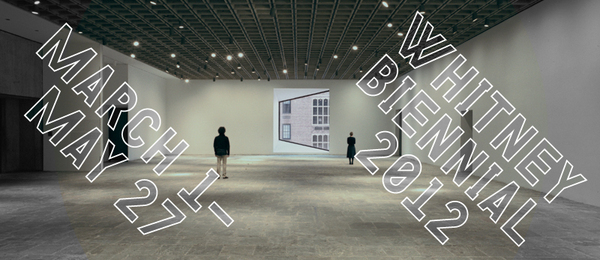
(Depending on where you are right now with your career you may be saying to yourself, If only I had such problems!)
But this kind of post-event let down brings up a question all of us face: Why are we doing this stuff in the first place? Because I’m sure many of you, like me, have these benchmarks – things we want to achieve because we think we’ll feel better when we get them.
I’ll be really happy when…
I get in that gallery.
Someone buys my work.
I get in the Whitney Biennial.
We might get so caught up in reaching that goal, completing a body of work or preparing for an exhibition that we forgot to feel happy with where we are right here and now. We may neglect to appreciate the present moment and our current situation.
I know in my own life I have had different dreams for my art. For instance, when I was in my 20s I always wanted to travel abroad for my art and have shows in different countries. I dreamed of exhibiting my work in museums. Now that I’ve achieved these things I want even bigger things. I want to be in bigger museums and better known venues. I compare myself to others who have achieved things I have not and I forget to appreciate all that I have created and all that I have achieved. This isn’t good enough. What’s next?
There are always things to appreciate no matter where you are in your career. It’s great to always be looking forward and to have big dreams visions and goals to help us move forward.
But actually the true joy and excitement is in the day-to-day!
We live only in the present moment.
Honestly, nothing else exists. Everything else is just dreams (the future) or memories (the past).
We got in this racket to enjoy the creative ride!
Every dream or goal is to inspire some kind of fun action that we can savor while we are in the moment.
Moment by moment by moment.
Contrary to popular myth it’s not about some kind of arrival, some pinnacle, some accomplishment.
Think for a moment about all the unfulfilled dreams and wishes you have currently for your creative or professional life. Now ponder what exactly is it that you hope you will feel when you’ve achieved this dream? Will you feel more successful? Will you feel happier because you’ll feel validated as an artist? Will you feel better when your work is recognized? Or that other people will take you more seriously as an artist?
Is there a way you can validate yourself right now? How can you appreciate or recognize yourself as you are in your current state?
Now, pause to savor this very moment. Breathe deeply. Feel your body against the chair, hear the hum of your computer. Receive the sounds around you near and far. The drip of the faucet, a bird, the neighbor’s thumping bass? Notice the colors and textures in your vicinity. Close your eyes and allow a faint smile to lighten your lips. Can you keep breathing and relaxing until you can touch on the exquisiteness and the preciousness of this present moment?
I’d love it if you’d share in the comments below something small (or big!) that you treasure and cherish in your current life. Be it the fact that you are blessed to have a box full of art supplies to make your work, or the fact that you have a space to work in or the fact that you have these gifts or skills or you have a family member or a friend or a teacher who is supportive of your endeavors.
Isn’t it wonderful that I have this connection to my creativity?
How great it is that I have had ideas and new ones keep flowing through me!
Isn’t it sweet that I am reading this article because I’m committed to supporting myself mentally, emotionally spiritually as a creative person?
Whatever it is, I invite you to appreciate that now and do not let go of your dreams!
Leave a Comment
Art & Meditation: Creating A Daily Practice
In this post, I’m continuing our exploration of how artists can use meditation as a
tool to improve their studio practice. You can read more in Part I and Part 2.
Recently I was asked, what is the difference between mindfulness and meditation? While mindfulness is being aware in the present moment, meditation is the means to cultivate mindfulness. It takes practice – just like learning to tie your shoelaces. When you were small, you may have struggled quite some time to learn this. But now you do it so effortlessly, you scarcely know the steps.
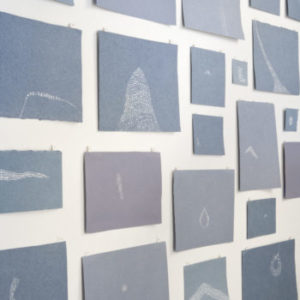
This daily practice of sitting in meditation can also be applied to sitting to make art. Picasso used to say, “Inspiration exists, but it must find you well placed at your work.” To me, “well placed” means showing up regularly to the studio, without fail, even if I’m feeling some resistance to the idea. Because the first ten minutes of work is always the hardest. Once you get going, the work carries you.
You know that feeling when you first wake up? When your thinking is clear and your mind is calm? Many people tell me that is when they have their best creative thinking. I know it’s true for me. When I have a challenging project before me, I like to devote at least 25 minutes on it when I first wake up following my meditation time. Some people get that fresh mind from taking a shower. I think that’s why many people say they get their best ideas in the shower. I think it’s similar to meditation. Your body is washed clean and with it, your thoughts. You’re relaxed, you are not trying to think of anything in particular or do anything else. Your mind becomes clear. Ideas flow in.
Meditation can give you that “fresh mind” any time of the day, no water required. I call meditation a superhighway to new ideas and solutions. When you slow thoughts, observe thoughts, your mind can open to its higher centers of creative thinking.
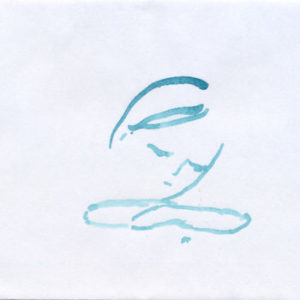
I have found that many artists struggle to find consistency in their creative practice. The first thing I recommend is setting aside 15 minutes to make art. Daily. I find that even the busiest people who truly want to make art can find 15 minutes a day. Consistency is key. Because your body, your mind, your heart and your soul get used to that time. It’s as if you were ready for it. The more you do it, the more ready you are.
The benefit of being consistent is that you find your mind is actually working on your art at other times, in the background, while you are doing other things. The creative problem-solving continues even when you are not actually in the studio.
Here are some things to consider to help you get started:
- Think about your mornings. Is there a way to carve out an extra 15 min to write/paint/draw before you walk out the door to work? I like to have my tea while I draw sometimes.
- What about lunch time? Can you keep some simple supplies such as paper, pens and markers at work for 15 minutes of drawing time during your break?
- What about your evening? After dinner, can you take fifteen minutes alone to draw, sketch, or scribble some ideas?
- No matter what time of day you choose, set a timer. Fifteen minutes goes by quick, and you may be surprised about what happens in a short, focused period of time.
- Create space. Consistency is easier if you have a place to work and have what you need. Whether it’s a corner of your desk with a jar of pencils or an entire room, make sure you have a place to create with your supplies close by.
How do you make time in your busy life for your art? What challenges do you face to building a daily habit? I invite you to share some of your questions or challenges, or your routines and habits that work in the comments section below.
Leave a Comment
Meditation and the Studio: Becoming Aware
It may surprise you to learn that I wasn’t a star pupil in art school. Not one of those students who carried those black, hard-backed sketchbooks everywhere, bursting with sketches, paintings and collages. Not the kind of art student who spent every waking hour making things. I was a diligent, attentive student. I did the assigned work, attended every class and loved it all. But when I started, I hadn’t the first clue how to turn out original work.

After graduation, I went through a difficult period in my creative life. I knew I wanted to devote my life to making art. But crushing self-doubts and critical voices plagued me every time I tried to work in the studio. I showed up to the studio regularly and managed to get work done, but I suffered from inexplicable fatigue due to the inner emotional stress of these critical voices. I sometimes grew distracted and unfocused. I sought out self-help books and groups for creative people, and slowly and subtly things began to change.
In my work as a teacher and artist for over thirty years, I know of many artists can relate to this feeling of paralysis or being stuck. For me, turning to mindfulness and meditation helped me make that shift to becoming the artist I am today. A lot of people believe that meditation or mindfulness is about reaching some exalted state, but it is actually about learning to be present.
When we practice meditation we naturally become more aware. Aware of our thoughts, our unconscious habits, the feelings and thoughts of the people around us, our impact on others. And the longer we practice, the more we notice. We notice subtle things that were always there – we just couldn’t see them before. Sort of like someone whose fuzzy vision becomes clearer with a new pair of glasses.
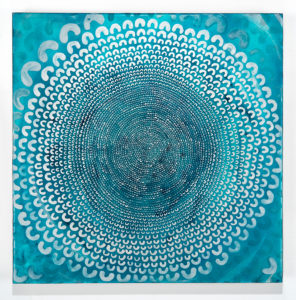
This type of deep noticing can have a profound impact on our creative work. As Paul Valéry put it: “To see is to forget the name of what one is seeing.” By being fully present with what we are creating, we can move beyond preconceptions and habits and encounter the work afresh.
If you’ve never spent time meditating before, you may find your mind to be a very messy place. Most of us have habits and patterns of thought that we unwittingly developed in our youth by simply imitating the patterns of thought of those around us. Patterned thoughts become like grooves in our brain – neural pathways – that can create habits of self-criticism, fear, doubt, cynicism, pessimism or worry. We scarcely notice them because they are so ingrained in us. And if we don’t notice them, we can hardly be aware that it is those habits or patterns of thought that are driving the circumstances around us.
If you are new to meditation, here are a few simple steps to experiment with it:
- Set aside 5 minutes each morning. As early as possible upon arising is easiest because your mind is still fresh and you don’t have as much resistance to the idea. (I’m too busy, I don’t feel like it, it’s too hard.)
- Find a comfortable and pleasant place to sit. One where you can sit in the exact spot every day.
- And if you have a smartphone, I suggest setting a timer with a gentle ring so your mind doesn’t need to be preoccupied with how long five minutes exactly is.
- Settle in: Ensure that your posture us upright, your chin ever so slightly turned down to elongate the back of your neck. Allow your shoulders to be comfortably loose and relaxed, with your shoulder blades on the same plan as your spine, rather than hunched forward.
- Gently close your eyes and just notice that breath. Pay attention as it fills your lungs quite easily and naturally, and then as it is expelled just as easily through your nostrils.
Thoughts will arise. About whether you remembered to take out the garbage last night, or the first appointment of the day, or that annoying thing your co-worker said yesterday. But you are not going to engage with those thoughts just now. You are going to notice the warmth of the breath as it gently flows in and out. And how your jaw has naturally unclenched and how every muscle is gently melting, releasing habitual tension. And the thoughts may come back: How long has it been now? Surely five minutes is up. I can’t sit here doing nothing! I have so much to do today! And then like a little child who has wandered off, you will gently take your mind by the hand and lead it back to the present moment.
If it helps, you can count your breaths. But just stay with the breath. And without noticing it, you have actually drifted into deep connection. You are not thinking. Then you notice that you are not thinking, and now you are thinking again. And so, you go back to your breath. Such is the task of a meditator. Like trying to take a knot out of a tiny thread with a needle. But hang with it. Please. It gets easier. Because you will untangle that knot and then that tiny thread will stretch out before you free of its knots. Before you know it, there is no thread at all.
Do you currently practice meditation in your daily life? Share your experiences in the comments below!
Leave a Comment
Motivation to Create! Six reasons to go make stuff NOW!
We all need a little push now and again. Sometimes we’ve just gotten busy and neglected making art for a little while or maybe we had a job or were raising children and neglected it for a good long while.
Whatever the reasons, here is some inspiration to help get you back to work! If not RIGHT this moment, then hopefully sometime in the very near future!
- Think how good you’ll feel when you do!
- Only by doing it will you be able to move through ‘the wall’ to free creative energy.
- You need creative time to bring out the best in yourself.
- The Butterfly Effect – Your creativity effects other in ways you will never know. You don’t have to be a “famous” artist to have an impact. Just think of how we are still affected by the cave paintings done over 6,000 years ago by anonymous early humans or the baskets, weavings, ceramics, etc. created by people in civilizations who predate ours.
- It’s an antidote to consumerism. Adds to the good in the world.
- Creativity connects you to something greater than yourself.
Now go make something. NOW. Go do it! Even if it’s just for 10 minutes! Yay!!
If you’ve been missing making your art, share below and let us know which reason resonated the most with you?
What are some other reasons you can come up with to do your creative work?
Leave a Comment
How to Start a Painting?
I had a fabulous, meaty question from a subscriber recently who wrote to say she had recently switched from a 30-year graphic design practice to painting and was finding it tough.
She asked “How do I start a new painting? My paintings have no consistency.
Do I just let it flow? Or does in need to have a set direction?”
This is the question that comes up when we begin to take a more focused approach to painting. When it becomes for us more than a pastime or hobby and becomes a passionate pursuit or profession.
Usually, it’s not the painting that’s tough, it’s the thoughts that come up – the judgments, the inner critic.
Here are some things I suggested she try:
1. Create a studio journal. Writing before starting a painting. Blurt everything out.
2. Step back from the thoughts that are coming up. Become aware of what the quality of the thoughts you have while painting.
3. Set a timer during your painting process and step back, pause every 20 minutes or so and notice what is going on. Check in with your body, emotions, thoughts.
4. If the thoughts are not supportive, replace with more supportive thoughts.
5. Take out all your paintings completed thus far and look at them as a group. Journal about them from a curious, non-judgmental perspective. Don’t worry whether you love it or hate it. Just get curious. Write down from a neutral voice what you are noticing.
6. Think from a broader perspective about what the paintings are about. What are they teaching you? What are they showing you?
Leave a Comment

